And actually, it’s the first Concentrational Resonance newsletter, ever. The first week of the year is always a great time to kick things off. There’s going to be lots of goings on with the sites of the Japanese American WWII concentration camps in 2024, from pilgrimages to books to art projects. I’m excited to collect and share this information — certainly this newsletter will never serve as the end-all-be-all source for information, but the aim is to be a solid and timely resource and to be a jumping off point to other important news and knowledge sources.
BACKING UP QUICKLY TO EXPLAIN HOW THIS NEWSLETTER CAME TO BE
Back in the summer of 2021, my wife and I took a road trip that included a stop in Arkansas to visit the site of the Rohwer concentration camp. This was where my grandparents, and their extended families, were unjustly incarcerated during World War II. It was an incredibly moving and resonant experience. I took in a great deal while wandering the site, but what hit me hardest was how much I didn’t know about my Grandparents’ story. I was inspired to learn more, and to get more involved in documenting and creating awareness of the Japanese American incarceration experience during World War II.
Since this initial road trip, which also included visiting the Jerome site, my wife and I have visited three more of the ten concentration camps: Tule Lake in California, Minidoka in Idaho, and Topaz in Utah. I've also joined the planning committee for the 2024 Jerome Rohwer Pilgrimage, currently being organized by JAMP and set for June 5-8, 2024. JAMP also gave me the opportunity to be a part of the 2023 Tadaima program along with photographers Sandy Sugawara and Haruka Sakaguchi, where I spoke about my Grandfather’s photography while incarcerated at Rohwer. And this past December, I visited the still picture branch of the National Archives in College Park, Maryland, to view and do further research on my Grandfather’s photographs.
All this to say that our initial visit to the Rohwer site has truly inspired me to learn more and further connect with the amazing community that is working to preserve and amplify awareness of this important part of American history. Publishing this newsletter simply allows me to organize and share with others the projects and events that I am learning about — the more we all engage and share, the greater the impact of our collective efforts.
SAVE THE DATE PILGRIMAGE CALENDAR
Given that it’s the start of a new year and already our calendars are filling up with trips and commitments, it’s helpful to know the dates of the 2024 pilgrimages. Not all the sites/committees have officially or publicly confirmed their pilgrimage dates, but a few have. Sharing here and will keep updating in subsequent newsletters as more pilgrimage dates get confirmed.
April 27, 2024 (always the last Saturday in April) — Manzanar Pilgrimage
May 2-4, 2024 — Topaz Art Pilgrimage
May 17-19, 2024 — Amache Pilgrimage
June 5-8, 2024 — Jerome Rohwer Pilgrimage (note: I am on the planning committee for this one, so do let me know if you have any questions).
July 25-27, 2024 — Heart Mountain Pilgrimage
STOPPING THE WIND FARM AT MINIDOKA
One characteristic to all the sites is how out of the way they are (of course that was a key requirement when the government was deciding where to build them) — often you are driving along the backroads for miles and miles before arriving at your destination. That’s how it was with Minidoka — a beautiful landscape of farmland as far as the eye can see as you drive along a desolate, gravelly road, occasionally seeing work trucks and semis heading in the opposite direction. And as we got closer to the site, we noticed some very curious protest signs:
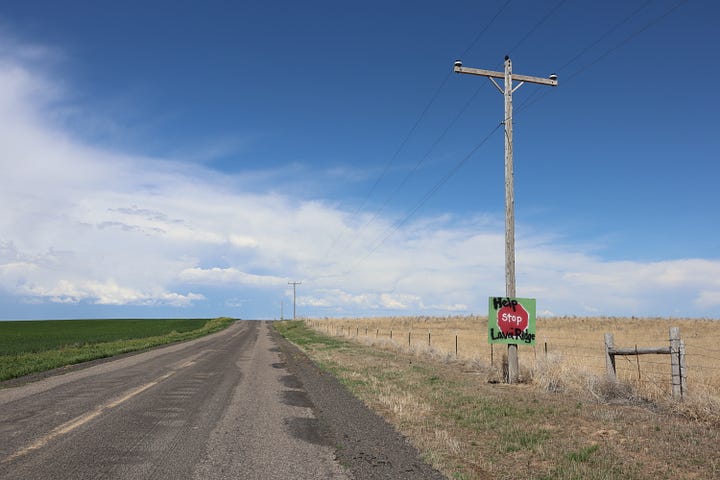
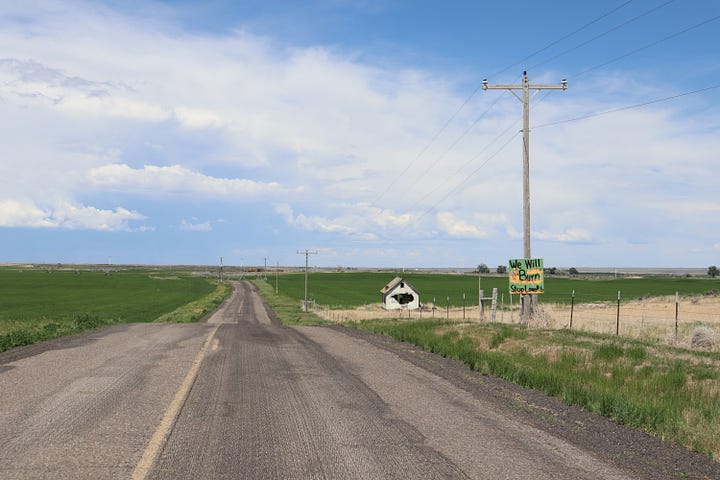
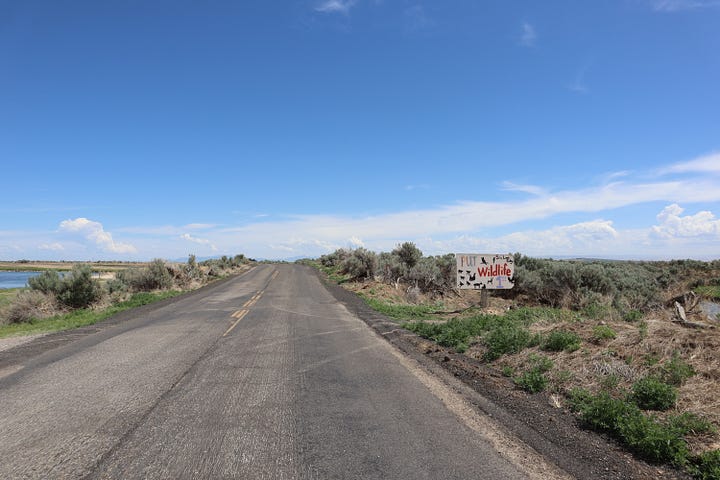
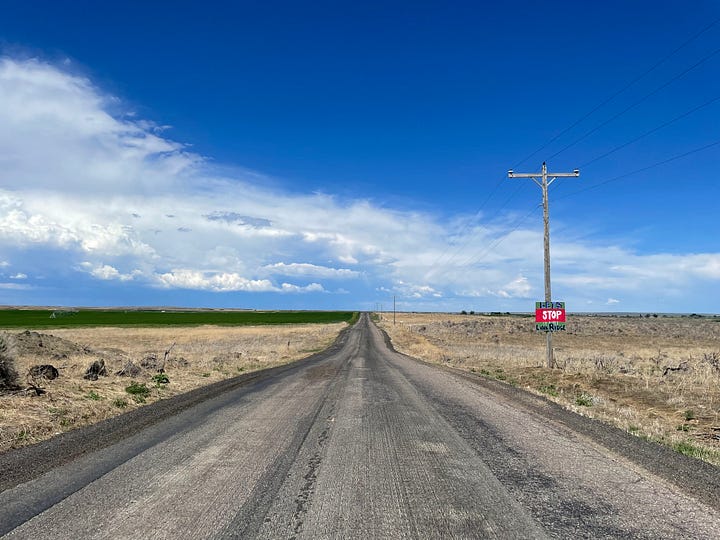
Once we arrived at the Minidoka visitor center, we learned that there is proposed wind farm (Lava Ridge) that would involve giant wind turbines being erected on lands near and in the view of the site of the Minidoka concentration camp. Thank goodness there is an organized effort underway to stop the building of the wind farm. You can learn more about the project, and how to help to protect the Minidoka site, by visiting the Friends of Minidoka website. There have also been several informative articles written about the opposition to the proposed wind farm project as it relates to the historical and emotional relevance of the Minidoka site:
“Biden’s renewable energy goals blow up against a painful WWII legacy” (Washington Post)
“Japanese Americans were jailed in a desert. Survivors worry a wind farm will overshadow the past.” (Associated Press)
The proposed Lava Ridge wind farm project, and the organized opposition to it, is a strong reminder of how important it is to stay aware of and get more involved with the communities working to preserve the history and amplify the continuing significance of the WWII Japanese American concentration camps.
POWERFUL ESSAY ON THE LANGUAGE OF INCARCERATION
Writer and public historian Tamiko Nimura recently published a thought-provoking essay in the Smithsonian Magazine exploring how the words we use to discuss the incarceration impact our understanding of the experience — not just in a historical context, but how we process and navigate relevant matters today. This includes casual conversations on pilgrimages, but also on urgent, politically charged matters like the proposed wind farm at Minidoka. I encourage you to give it a read: “Why the Language We Use to Describe Japanese American Incarceration During World War II Matters.” (Smithsonian Magazine)
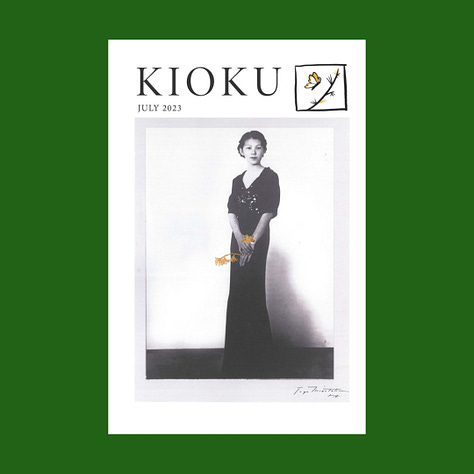
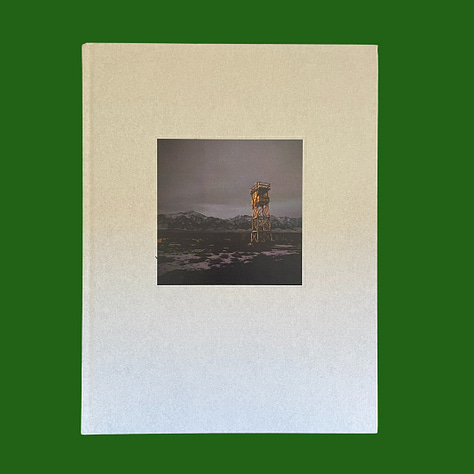
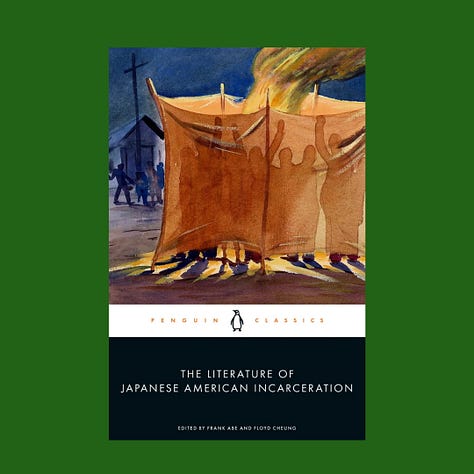
KIOKU MAGAZINE
Kioku is a very cool new magazine exploring Japanese American culture from brother and sister team Katey Terumi Laubscher and Finn Kaoru Laubscher. The idea for Kioku came about after experiencing the Heart Mountain Pilgrimage — clearly pilgrimages have a way of inspiring amazing projects like this. The first issue was published in July 2023 , and the second issue is currently underway. Visit kiokumag.com for more information and to order.
SHOW ME THE WAY TO GO TO HOME
Earlier this year I got my signed copy of Sandy Sugawara and Catiana Garcia Kilroy’s incredible photography book Show Me the Way to Go to Home — An ambitious project that features stunning photographs of the WWII Japanese American concentration camps. This is an important work that evokes the vital need to preserve, study, share, and make sure we continue to learn and teach the hard lessons and impacts of the camp experience. I highly recommend adding this book, exquisitely published by Radius Books, to your collection. (You can watch Sandy discuss the project in our Tadaima presentation about The Role of Photography in the Pilgrimage Experience.)
FUDEKO PROJECT
I learned about the new email/letter-based storytelling Fudeko Project by attending a virtual presentation featuring project creators Hana Maruyama and Thomas Lee during the 2023 Tadaima program. The project helps Japanese American former incarcerees share their stories with loved ones by sending weekly prompts that encourage storytelling — and at the end of the year, the participant gets a collection of their writings. This is a great way to encourage the documentation and sharing of the incarceration experience. You can learn more about the project here.
HEART MOUNTAIN BUNGEI
The Heart Mountain Interpretive Center unveiled a new online exhibit featuring newly translated poetry, essays, and short stories from the Heart Mountain Bungei, a Japanese-language literary magazine that was published by the Japanese Americans incarcerated at the Heart Mountain concentration camp during WWII. You can see images of the journal side-by-side with the English and Japanese translations of the pieces. Full details about the literary translation project can be read here.
FORTHCOMING ANTHOLOGY
I’m very excited about the forthcoming anthology from Frank Abe and Floyd Cheung: The Literature of Japanese American Incarceration. The collection, which “recovers and reframes” the literature produced by the people impacted by the incarceration experience during World War II, will be published on May 14, 2024, by Penguin Classics. Frank has a great post on his site about the project — you can read it here. Of note is that many of the works in the anthology have been unearthed from the deep archives, and also translated from Japanese to English for the first time. Can’t wait to dig into these newly discovered and translated works. For now, you can pre-order the book from your local independent bookstore and mark it as a “Want to Read” on Goodreads.
THANK YOU
Thank you for reading and subscribing. If you haven’t yet subscribed, you can do so by clicking the button below — I will be sending a monthly update.
Finally, if you’ve got a camp/pilgrimage-related resource or project or event I should know about, please leave a note in the comments, or simply reply to this email. Always wonderful to further connect with the Japanese American community and it would be great to hear from you.
—

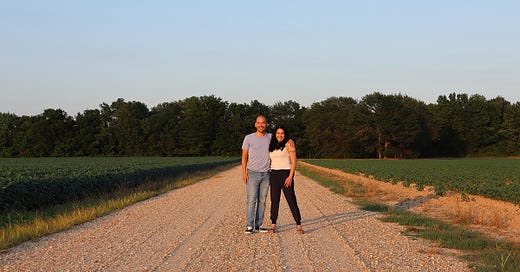



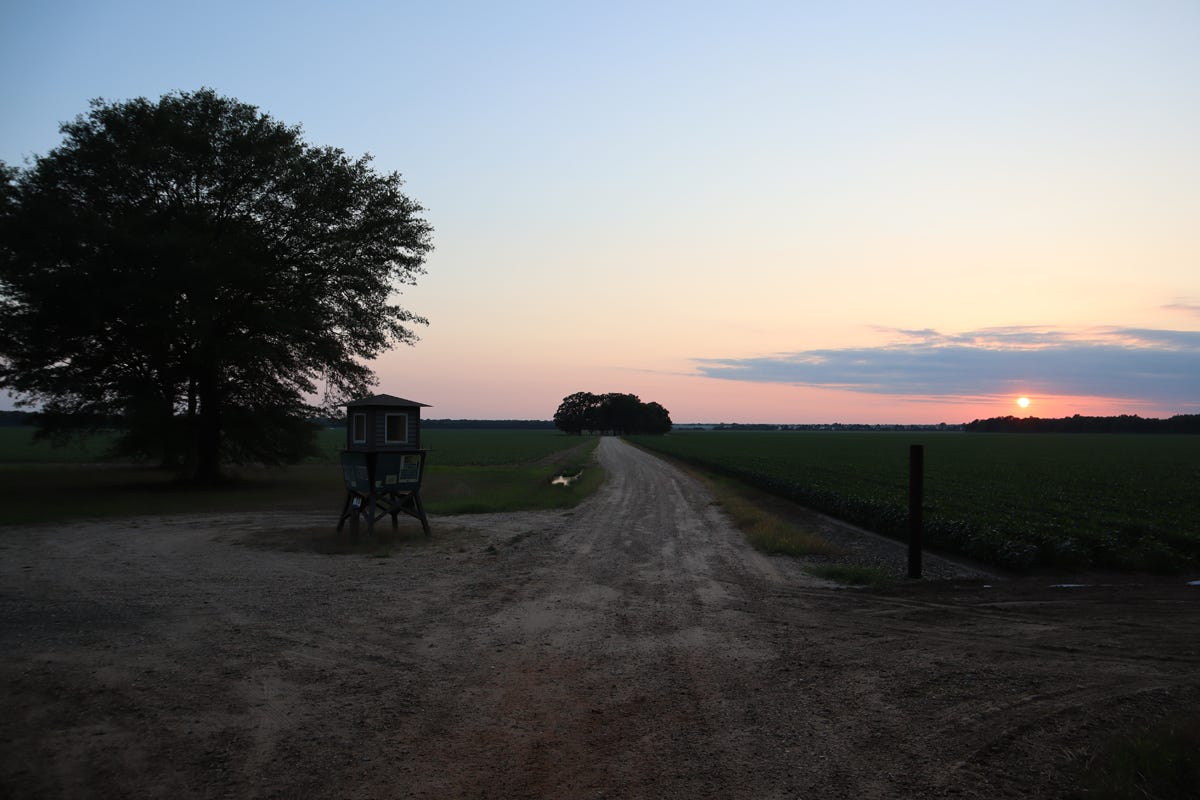
Jeffrey- I’ve only recently learned about the extent of Japanese concentration camps in the US, and was really interested in its history. What was it like to first see your grandfathers photograph in MD?